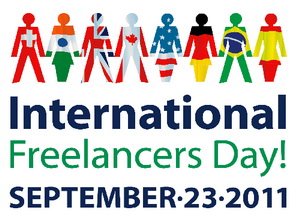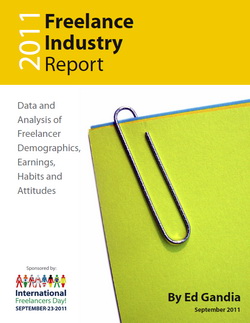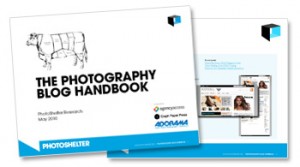 The Creative Freelancer Conference is a business-focused event for solopreneurs in design, writing, photography, and illustration. In addition to face-to-face networking with creative pros from complementary disciplines, you can learn some fresh approaches to marketing, client relations, productivity, and money management.
The Creative Freelancer Conference is a business-focused event for solopreneurs in design, writing, photography, and illustration. In addition to face-to-face networking with creative pros from complementary disciplines, you can learn some fresh approaches to marketing, client relations, productivity, and money management.
The 2012 Creative Freelancer Conference takes place Thursday, June 21 and Friday, June 22 as part of the HOW Design Live Conference June 21 to June 25 in Boston. The Creative Freelancer Conference is held in partnership with the Marketing Mentor creative-business consulting firm.
Here are some sessions being planned:
Planning for Your First Year of Freelancing
Shane Pearlman will recommend ways to avoid common rookie mistakes and be more successful during your first year on your own. Among other things, he will explain the importance of creating contracts, getting deposits from clients, and tracking finances.
Options for Growth
Luke Mysse will discuss traditional and non-traditional ways to grow your business, and talk about how to decide which of three business models is right for you: solo, solo plus a virtual team, or full staff.
Why a Bigger Business Isn’t Always Better
For many owners of creative businesses, success is more about satisfaction than size. Adelaide Lancaster will present examples of many different ways entrepreneurs think about business growth. While gaining clarity on growth options, you will learn how to determine the right direction for your business and recognize your ability to create work based on your needs and goals.
Building Your Prospect List: Quality vs. Quantity
Success in any business start-up requires knowing how to identify your addressable market and build a marketing funnel to convert prospects into customers. Allen Murabayashi will offer practical advice on identifying your prospects, building a prospect list, and converting the prospects on your list into paying clients.
Skillful Communications with Clients
Understanding what your clients really want and giving it to them doesn’t mean you have to function simply as an order taker. Many clients expect you to take a leadership role and prove that your expertise can truly help their businesses. Marcia Hoeck explains how to start client relationships out right, by setting the tone for conversations and becoming a valued resource without being a doormat. Learn how to discuss tough issues like a pro, and put yourself in a position of strength.
Is Your Website Generating Business?
To ensure that your website is generating quality leads for your business, Mark O’Brien will take you through Newfangled’s 9-Step Website Planning Process. Learn how to use SEO to attract the right prospects, craft a content strategy that will convince prospects of your expertise, and generate quality leads through clear calls to action.
The Nuts and Bolts of Pricing and Negotiating
Creating a pricing structure for your business can be tricky. Do you base your pricing on the value of your services? Or is there another (better) metric? Sarah Durham will show you how her time-tracking structure works, and offer advice for implementing it. Learn how to realistically create estimates and methodically manage pricing to ensure you end up profitable. Get tips on talking money with potential clients and using figures from the past to inform future projects.
How to Create and Execute Your Marketing Plan
An inconsistent, haphazard approach to marketing can lock you into the dreaded feast-or-famine cycle of freelance work. And, it may force you to take on undesirable clients and projects and accept sub-par fees. Ed Gandia will share a practical framework for developing a marketing plan aligned with your goals and personality. Discover strategies that can help you enjoy the process of marketing your services.
Live Audit
Marketing Mentor founder Ilise Braun and David C. Baker will provide a rare behind-the-scenes look at a fellow creative freelancer’s business. They will examine in-depth the freelancer’s finances, day-to-day business practices, and work style. During the audit, Braun and Baker will identify the freelancer’s successes and mistakes and suggest the type of results they can attain and the opportunities they should seize.
LINKS








